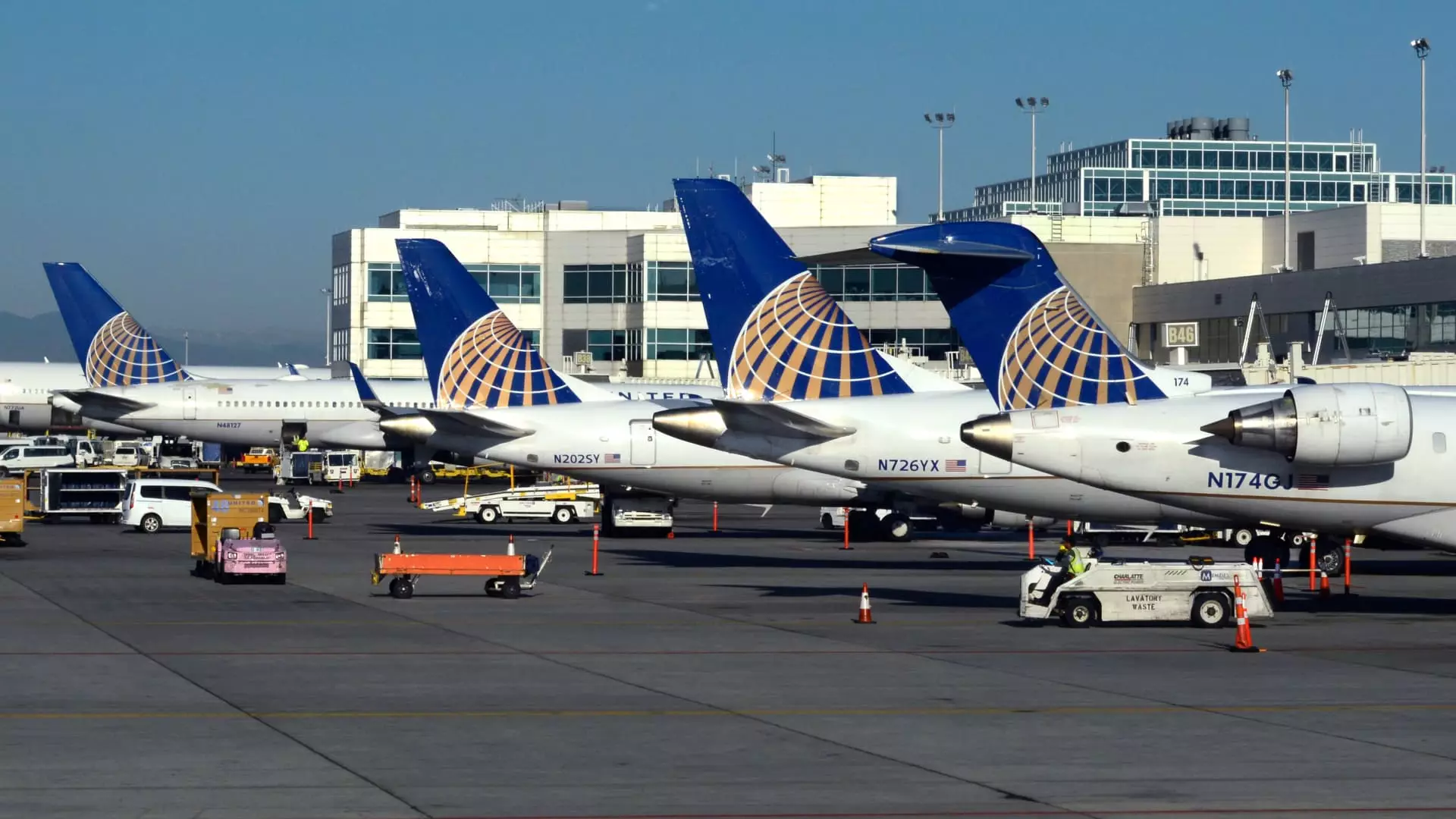United Airlines’ recent decision to increase fees for its annual airport lounge memberships and rewards credit cards has stirred a notable amount of discourse among consumers and industry analysts alike. The airline seems to be engaging in a calculated tug-of-war, testing the limits of how much customers are willing to pay for sought-after travel perks. As Richard Nunn, chief executive of United’s MileagePlus loyalty program, remarked, the company is keenly aware of balancing these cost increases with perceived value. But in a world where consumer loyalty is hard-won and easily lost, is the price of growing benefits worth the backlash that follows?
In an era when every incremental fee feels like a betrayal to the average traveler, the rationale presented by United carries a touch of arrogance. Nunn suggests that despite the fee increases, the enhanced benefits—like rideshare credits and significant discounts on award flights—will overshadow any grievances. However, one must ask, amid slowing air travel demand and shifting loyalty patterns, is it wise to assume that more perks can compensate for a rising financial burden?
The Ripple Effect of Airline Fee Structures
Over the past decade, airlines have adopted a “nickel and dime” approach, charging for everything from seat assignments to checked bags, alongside raising prices for previously free services bundled with co-branded credit cards. United’s fee hike follows a trend prominent among its competitors, such as Delta and American Airlines, which have also adjusted their pricing to tackle increased costs and growing demand for airport lounges.
It’s worth noting that while airline executives tout the benefits of such changes, customers often perceive them as ulterior motives for maximizing profit. Actively targeting the growing number of premium credit card holders with exclusive lounge access raises an interesting ethical question: are airlines prioritizing their bottom line at the expense of loyalty?
Consumer Fatigue and the Future of Airline Loyalty Programs
The escalating fees suggest an ambition for airlines to bolster revenue streams, and United has indeed seen a substantial cash flow in this domain. With $3.49 billion in “other” revenue—including that from rewards cards and lounge memberships—one cannot overlook that this is both a lucrative and precarious position.
The recent moves may initially lure more new sign-ups, but they could also breed resentment among longtime loyalists feeling exploited. Walking this tightrope may satisfy quarterly earnings but could alienate the very customers whose loyalty programs are designed to retain. Trust is a delicate product, and the erosion of that trust can lead to fragmentation of longstanding allegiance.
A Call for Transparent Customer Relationships
Ultimately, the changes by United Airlines highlight broader themes of consumer vulnerability and corporate profit-making in today’s fast-paced, competitive marketplace. United may believe its upgraded perks will outweigh fee increases, but as customer loyalty continues to evolve, companies must tread carefully to maintain long-term relationships with their clientele. The challenge lies not only in enhancing value propositions but also in ensuring transparent dialogue that avoids alienating core customers while pursuing new revenue streams.
Through these increased fees, United may be wagering more than just a few dollars; they might be risking the very loyalty of their customer base in the long run.

